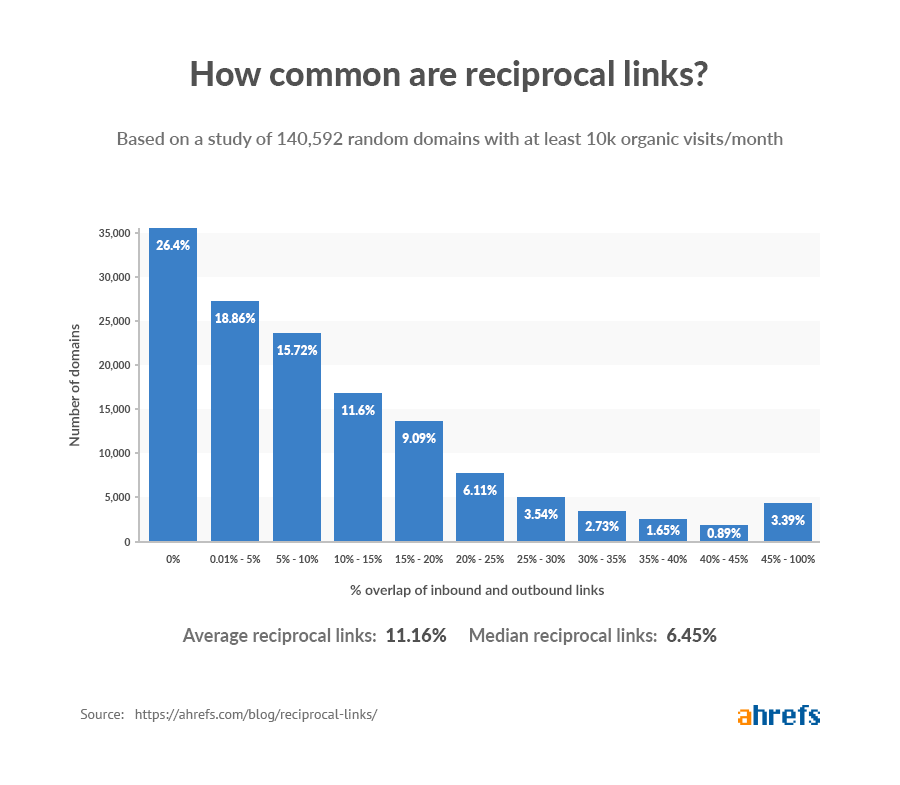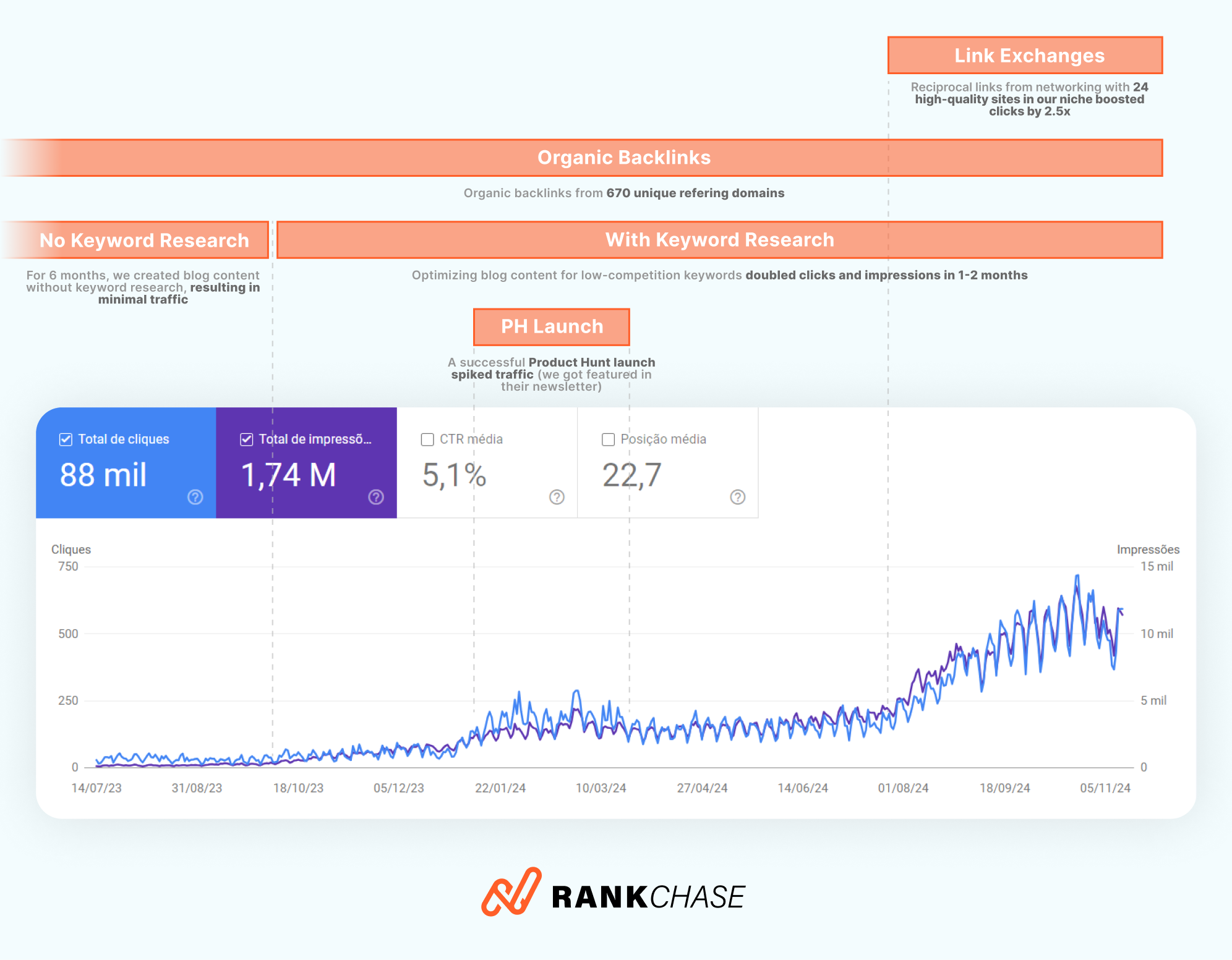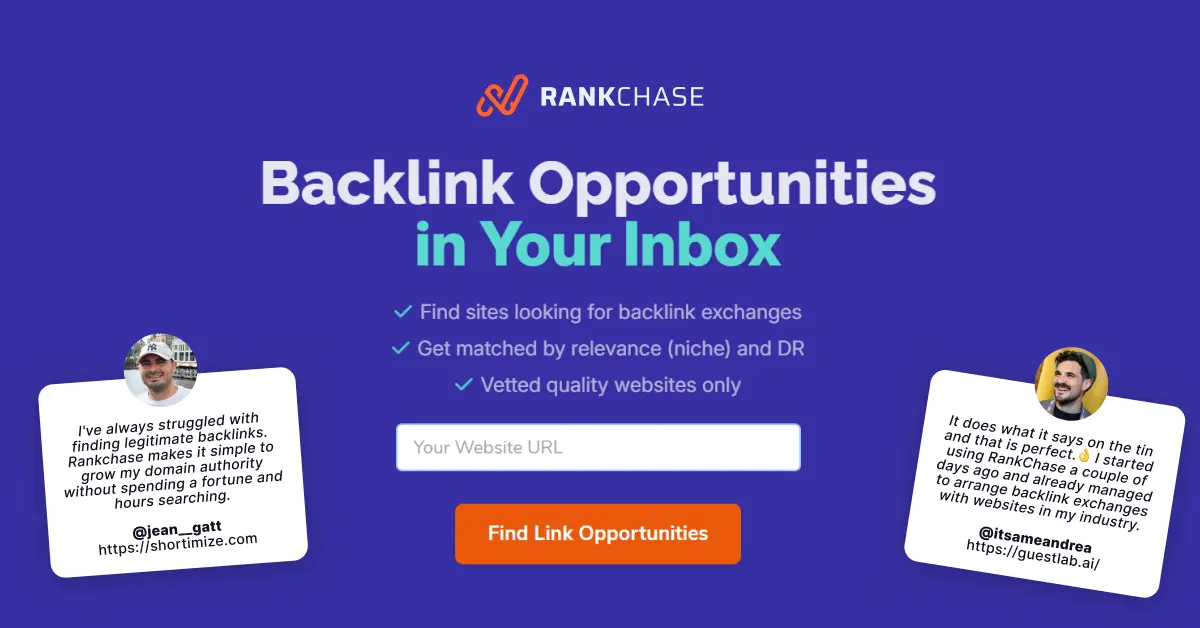BLOG ARTICLE
Is Link Exchange Good for SEO? Everything you need to know
Last updated: 4/13/2025
Last updated: 4/13/2025
Link exchanges have been around since the early days of SEO. Some see them as a must-have strategy for building backlinks, while others caution against the risks they might pose with Google’s algorithms.
So, are link exchanges a smart way to boost your rankings, or do they come with too many strings attached? As with most things in SEO, the answer lies somewhere in between.
In this article, we’ll explore the ins and outs of link exchanges, from their types and benefits to potential risks and how to use them effectively.

What Are Link Exchanges?
At its core, a link exchange is a mutual agreement between two websites to link to one another. This practice has been around for decades, and while it might sound simplistic, the way it’s executed can vary widely.
Why do people do it? Simply put, links are a fundamental component of SEO. They signal authority, trust, and relevance to search engines.
But when done poorly—or excessively—link exchanges can attract penalties instead of boosting rankings. So, the big question remains: can they be good for SEO? Let’s find out!
Types of Link Exchanges
Reciprocal Links
The simplest and most common type, reciprocal links are straightforward agreements where two sites link directly to each other. For example, a travel blogger links to a local hotel’s website, and the hotel reciprocates with a link back to the blogger’s travel guide. This kind of exchange can feel natural when there’s a clear, mutual benefit.
Private Influencer Networks (PINs)
PINs involve a group of websites or businesses that collaborate to exchange links in a more organized way. These networks often exist within specific niches, like fashion or tech, and might involve blog posts, homepage links, or even subtle mentions within product reviews.
Guest Post Swaps
Here, two parties contribute guest posts to different websites and include backlinks to each other’s sites within the content. For instance, a fitness coach might write a blog for a recipe site, while the recipe site’s owner contributes to the coach’s fitness blog. This type of exchange is particularly valuable because it places the link within relevant, high-quality content.
Three-Way Link Exchanges
A more complex strategy, three-way exchanges use an intermediary site to make the connection less obvious. For example, Site A links to Site B, and in return, Site B links to Site C. While this approach aims to avoid detection by search engines, it requires careful planning to ensure all links feel organic.
Google’s Stance on Link Exchanges
Google’s official guidelines caution against excessive link exchanges, specifically those designed solely to manipulate search rankings. But what does “excessive” mean, and why does this warning exist?
Understanding the nuance behind Google’s position can help clarify when link exchanges are acceptable—and when they might pose risks.
Why Does Google Discourage Excessive Link Exchanges?
Google’s goal is to deliver high-quality, relevant results to its users. Backlinks play a key role in signaling a website’s authority and relevance, but they can also be misused.
Google’s warning against excessive link exchanges aims to prevent abusive practices like link farms and spammy, irrelevant partnerships while still allowing for natural, legitimate exchanges.
- Curbing Link Farms and Manipulative Schemes
Link farms are networks of websites that engage in mass reciprocal linking, often with no regard for relevance or user value.
You’ve probably seen those websites that look like online magazines, covering everything from crypto to Kim Kardashian. They jump on the trendiest topics of the moment, covering all kinds of subjects while linking to a mix of completely unrelated websites.

These schemes exist purely to inflate search rankings artificially, undermining the integrity of Google’s algorithm.
Google’s focus on “excessive” exchanges helps distinguish legitimate linking from this kind of manipulation. If a website’s backlink profile shows hundreds of reciprocal links in a short period—especially with low-quality or unrelated sites—it signals an attempt to game the system, which can result in penalties.
- Safeguarding Relevance and User Value
Another reason for Google’s caution is the risk of spammy, irrelevant links diluting the user experience. For example, if a cooking blog links to a car insurance website, it’s unlikely to benefit users. These irrelevant links clutter search results and reduce the quality of recommendations Google provides.
By warning against excessive exchanges, Google encourages website owners to prioritize relevance and user value in their link-building efforts.
What Does Google Likely Consider Acceptable?
The very use of the term “excessive” in Google’s guidelines suggests that reciprocal links are not inherently bad. Instead, the warning targets unnatural practices, leaving room for reasonable, relevant, and user-focused exchanges to thrive.
1. Natural Link Exchanges
Reciprocal links often occur naturally between businesses, content creators, or organizations that share a genuine relationship. For example:
- A local business links to a nearby partner’s website, and the partner reciprocates.
- A blogger links to a complementary resource, and the resource owner links back to their related content.
These exchanges add value for users by creating a network of useful, interconnected resources. Google is unlikely to penalize these links, as they align with its mission of improving user experience.
2. Relevance as a Key Factor
Relevance plays a central role in determining the legitimacy of link exchanges. For example, a fitness blog linking to a recipe site that promotes healthy eating feels natural and beneficial for readers. On the other hand, linking to an unrelated gambling site is a clear red flag. When reciprocal links are relevant and enhance the user experience, they are more likely to be viewed positively by Google.
3. A Balanced Link Profile
Websites with a balanced mix of backlinks—including reciprocal links—appear more authentic. An over-reliance on reciprocal links might raise suspicion, but a moderate number, combined with other link-building strategies, contributes to a healthy and natural-looking backlink profile.
Reciprocal links are everywhere!
Ahrefs conducted a detailed study of 140,592 websites that get over 10,000 monthly organic visits from Google and the results were surprising. 73.6% of these sites used reciprocal links! This shows that reciprocal linking isn’t just common—it’s widespread among websites that perform well in search results.

In another analysis, Ahrefs examined the top 10 ranking pages for about 10,000 non-branded search queries with moderate keyword difficulty. They found that 43.7% of these high-ranking pages included reciprocal links. On average, 4 to 5 out of every 10 top-ranking pages relied on this strategy.
Link Exchanges Can Give You Some of the Best Links
Link exchanges can be one of the simplest and most effective strategies for building high-quality backlinks—when done thoughtfully.
A few well-planned exchanges with the right partners often outperform a large volume of random links. Here’s an example from one of our websites.

With 670 referring domains, our site had a strong foundation. However, by arranging just 24 link exchanges with highly relevant websites in the same niche, we saw clicks increase by 2.5 times. This dramatic improvement came from prioritizing quality and relevance, focusing on links embedded in meaningful, contextual content that aligned with our audience’s interests.
While link exchanges are powerful, they’re just one part of a broader strategy. For our site, they worked alongside other tactics like organic backlinks, keyword optimization, and content outreach.
Diversifying your link-building approach is key to keep your backlink profile natural. The good news is that link exchange partnerships can provide high-quality backlinks, and you don’t need a huge number of them to make a significant positive impact on your SEO.
How to Find Link Exchange Partners
Finding the right websites for link exchanges can be one of the most challenging aspects of link building. The goal isn’t just to get backlinks but to ensure they come from reputable, relevant sites that enhance your SEO strategy.
Many of the link exchanges we set up came from networking within our industry. We attended conferences, joined WhatsApp groups with experts in our field, and reached out directly to other tool founders on LinkedIn and via email, connecting on Zoom calls. This allowed us to brainstorm cross-promotion ideas, including link exchanges.
To streamline this process, several link-building tools are available to help you find quality partners, making it easier to connect with the right websites.

Using link building Tools Like RankChase
Finding the right link exchange partners can be time-consuming, but platforms like RankChase make the process much easier.
Instead of spending hours researching potential websites, RankChase automates the process by analyzing your site’s niche, Domain Rating (DR), and traffic, and then connecting you with similarly-sized websites in your industry looking for link and content exchanges as well.
RankChase constantly scans its database for potential matches, ensuring you’re always connected with new opportunities.
Matches are delivered straight to your email and dashboard, so you don’t have to lift a finger to find relevant websites for link exchanges. RankChase does all the heavy lifting for you—completely on autopilot.
Here’s How RankChase Works:
- Submit Your Website
Start by adding your site to the RankChase platform. This gets your domain into the system and opens the door to new opportunities. - Site Analysis
RankChase evaluates your site’s niche, DR, and traffic metrics. - Receive Matches in Your Inbox
Once everything is set up, RankChase delivers link exchange opportunities straight to your inbox. Each match is tailored to your niche, making the exchanges feel natural and mutually beneficial.
How Does RankChase Avoid Low-Quality Matches?
RankChase is designed to prioritize quality, ensuring that you’re matched only with reputable and relevant websites. To achieve this, the platform uses several safeguards to filter out low-quality or spammy sites. Here’s how it works:
- Domain Rating and Traffic Checks
RankChase evaluates a site’s DR and traffic to confirm it’s an active and legitimate website. Sites with unusually high DR but low traffic are flagged for further review, as this can indicate artificial or suspicious link-building practices. - Spam Score Analysis
The platform analyzes factors like the ratio of backlinks to referring domains. Websites with high spam scores are automatically excluded, helping you avoid harmful associations. - Domain and Email Verification
RankChase regularly validates the domains and associated emails of its users to ensure they’re functional and authentic. This minimizes the risk of connecting with inactive or unreliable websites. - Community Feedback (Coming Soon)
A planned feature will allow users to flag suspicious websites or unresponsive partners directly from the dashboard. This community-driven approach will add an extra layer of quality control.
Conclusion
Are link exchanges good for SEO? The answer depends on how you use them. When done strategically, with quality partners and a focus on user value, they can boost traffic, strengthen relationships, and enhance your link profile. But like any tool, they must be used wisely. Moderation, ethics, and a commitment to user experience are your best allies in making link exchanges work for your SEO strategy.
If you’re looking for a way to improve your SEO without the headaches of manual research, RankChase can be a great help. By focusing on quality, relevance, and simplicity, it makes building valuable backlinks easier than ever.